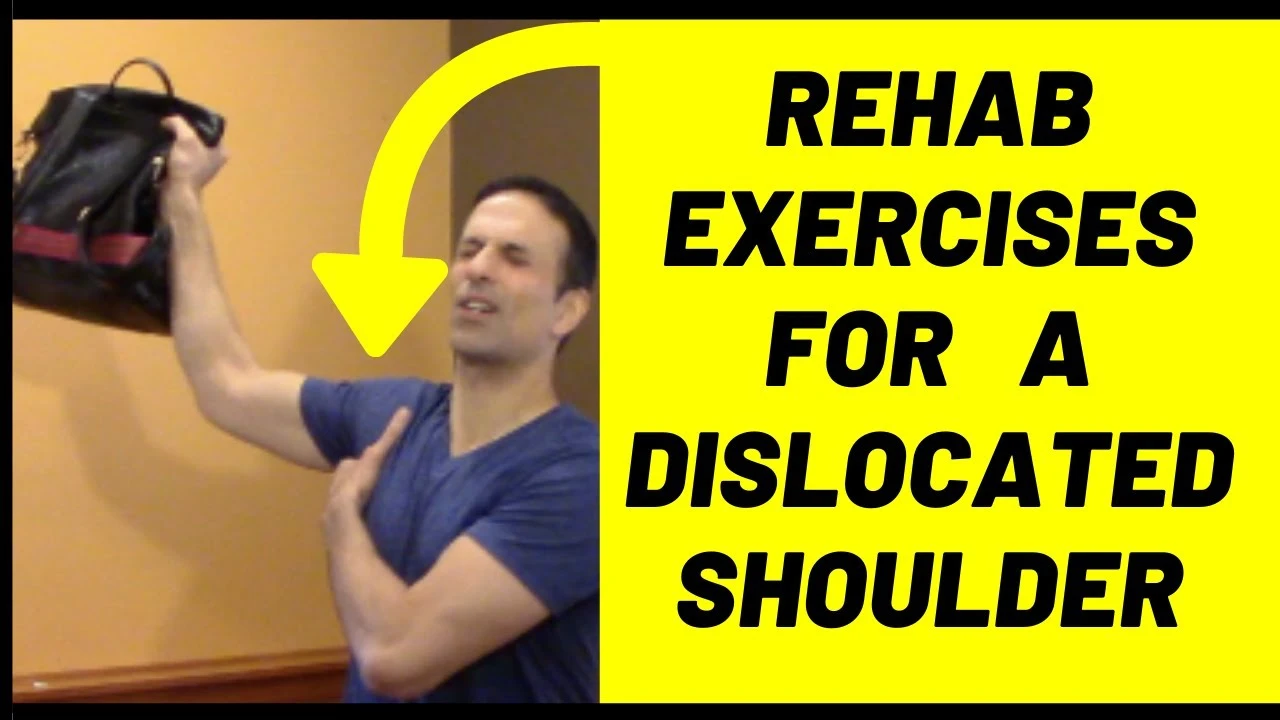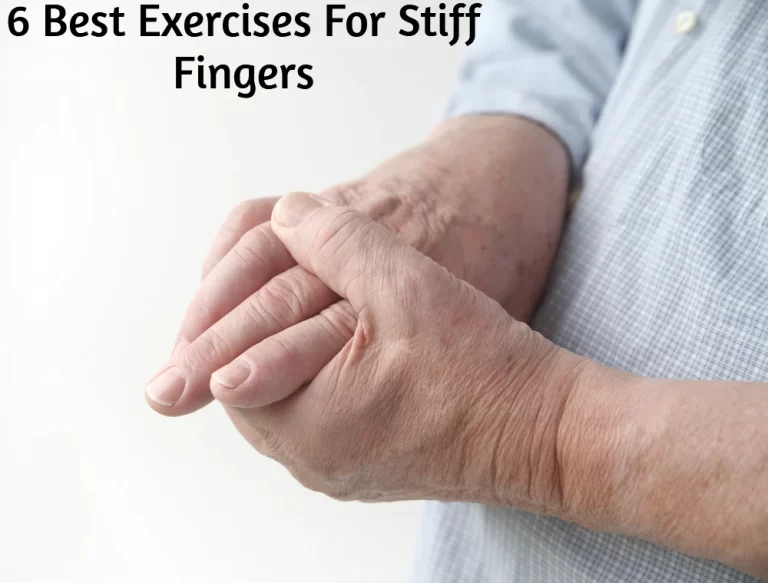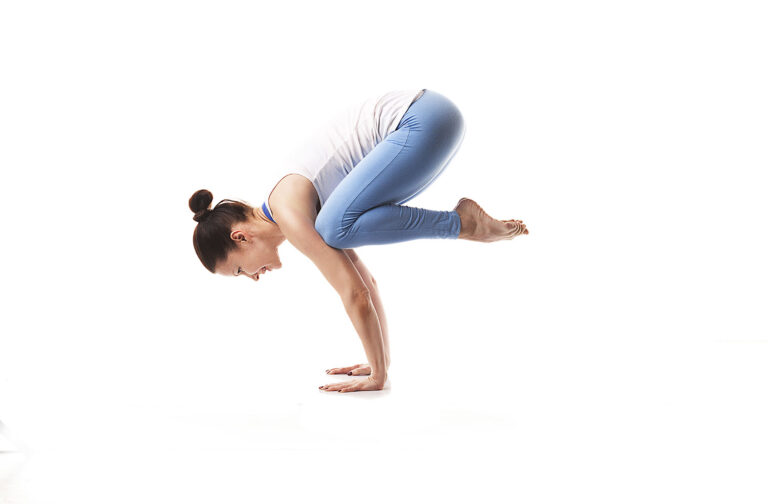Shoulder Dislocation Rehab: A Safe and Effective Program for a Speedy Recovery
Shoulder dislocation is a type of damage where the humerus head pops out of the socket that is part of your shoulder, resulting in stiffness of the arm and the shoulder. The shoulder is generally prone to injuries such as falls, bumping into something, or other forms that can create various degrees of injury.
It is necessary to get prompt medical care such as consultation, scans, and X-rays, to chart out a healing plan that includes medication, surgery, or physiotherapy depending on the scale of the injury and medical advice.
Introduction
The shoulder joint is the most mobile in our body, this is known as a ball and socket joint. This is a benefit as it means we can engage in dynamic exercises and activities. the shoulder joint is most susceptible to dislocation. Anterior (forward), posterior (backward), and downward shoulder dislocation are all possible. This is typical of the 18–30-year-old group that participates in contact sports like rugby. Males are more likely than females to have a dislocation, and if a dislocation occurs, it is more likely to happen again. This is probably because more guys are participating in contact sports.
A close reduction maneuver is usually necessary for most dislocations, depending on how severe they are. To transfer the arm bone into its socket, a precise movement is performed in this instance. An operation, usually performed via keyhole surgery, may be necessary in difficult circumstances. If there has been injury to the surrounding soft tissue, such as ligaments, cartilage, and tendons, this procedure seeks to improve the stability of the shoulder.
Shoulder dislocations can be classified as anterior or posterior: Approximately 95% of occurrences of shoulder dislocation are of the anterior kind. This makes it the most common type. When the humerus gets pushed out of the front of the shoulder joint, it usually occurs from a direct blow to the shoulder or from falling onto an extended arm.
Shoulder dislocations that occur in the posterior direction are less common, occurring in approximately 5% of cases. It happens when the humerus is pushed out of the rear shoulder joint, usually due to a powerful muscle contraction or a violent blow to the front of the shoulder. Oftentimes, a posterior shoulder dislocation is mistakenly identified as a rotator cuff injury.
How to Diagnose a Dislocated Shoulder
The upper arm bone, or humerus, comes out of its socket when a shoulder is dislocated, causing a noticeable alteration in the shoulder’s shape. This will result in swelling, excruciating pain, and a loss of arm movement. A physician may give the patient a sedative when this injury happens and then reset the bone.
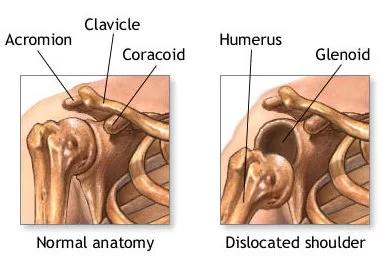
Surgery to realign the humerus in its socket may occasionally be necessary, however, this is extremely uncommon. If ligaments or cartilage need to be healed, this is more likely to happen.
Causes Of A Dislocated Shoulder
Shoulder dislocations are frequently caused by injuries such as collisions, sudden arm wrenching, falls, or maybe even sleeping in unusual positions.
Dislocated Shoulder: Diagnosis And Treatment
It is possible to diagnose a shoulder dislocation by going to a doctor. X-rays and scans can be used to determine the extent of the injury after a preliminary evaluation of the pain site.
Treatment options for shoulder dislocation are multiple.
Medication:
If the injury is not severe, this is one of the most popular methods for treating shoulder joint dislocation. Prescriptions for muscle relaxants and painkillers are common since they can assist in lowering inflammation and promote slow healing at the injury site.
Closed reduction:
Here, an experienced and certified medical professional will gently manipulate your arm to realign the joints. After monitoring the level of pain, edema, and other variables, this is done. When executed correctly, it can provide instantaneous pain relief.
Surgery:
To correct the bone and aid in joint healing, surgery may be necessary. Additionally, it is required if the nearby muscles and nerves are damaged.
Immobilization:
This is another typical treatment for a dislocated shoulder, in which the patient’s doctor may recommend a splint to immobilize the shoulder. The severity of the injury and the amount of time your body needs to heal will determine how long you wear it.
Rehabilitation
This is commonly carried out following the removal of the splints or when the injury demonstrates a certain degree of healing. It is possible to design rehabilitation based on the patient’s needs.
Recovery Time For A Dislocated Shoulder
Similar to any other injury, a dislocated shoulder recovers more slowly depending on several circumstances. This changes depending on the type of injury and the personalized healing strategy. Beyond this age, the healing process is also influenced by other medical issues. But generally speaking, the healing time lasts between 12 and 16 weeks, after which, following two weeks of rehabilitation, one can start using their arms gradually. The healing period for a dislocated shoulder might vary from six to nine weeks.
Here we describe different exercises for shoulder joint recovery after the dislocation:
Postural exercises for a dislocated shoulder
If they are painless, you can perform these early in the program. To find out exactly which exercises to perform when and what kind of treatment to use, view our comprehensive dislocation shoulder rehab program.
Scapular stabilization exercise
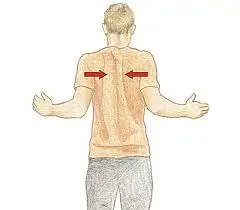
- Sit with your shoulders rounded forward and slightly hunched.
- Squeeze your shoulder blades together in the back while pulling your shoulders back and upward.
- After three seconds of holding, let’s release.
Neck retraction
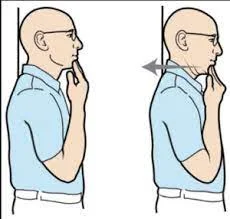
- Get up from your position and adopt a nice, straight posture.
- After that, raise your head above your shoulders to create a “double chin.”
- Slightly squeeze, then release and try again.
Range of motion exercises for shoulder dislocation
These goals are to increase your shoulder’s range of motion gradually and safely. These can only be started after the program’s initial acute phase is over.
Wand exercise: Flexion:
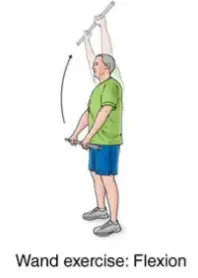
Hold a stick with both hands, palms down, while standing straight. Lift your arms over your head and extend them while maintaining a straight elbow. After five seconds of holding, go back to the beginning position. Ten times over, repeat.
Wand exercise: Extension:
Hold a stick behind your back with both hands while standing erect. Displace the stick from behind you. For five seconds, hold the final position. Remain calm and go back to where you were. Ten times over, repeat.
Wand exercise: External rotation:
With both hands up and facing upwards, grasp a stick while lying on your back. With your elbows at your sides and positioned 90 degrees bent, your upper arms should be resting on the floor. Keep the elbow of the arm you are pushing at your side while you use one arm to push the other arm outward and away from your body. Holding the stretch for five seconds is recommended. Repeat ten times.
Wand exercise: Internal rotation:
Holding the end of a stick with one arm behind your head, stand. Grip the stick with the other arm behind your back at waist level. Bend your elbows to move the stick up and down your back. Return to the starting position after holding the bending position for five seconds. Ten times over, repeat.
Wand exercise: Shoulder abduction and adduction:
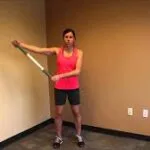
With both hands held firmly in front of you, away from your body, grasp a stick while tall. In the front of your thighs, place the stick. Use one arm to push the other arm out to the side and as high as you can while maintaining a straight elbow. Tent for five seconds. Do this ten times.
Pendulum exercises
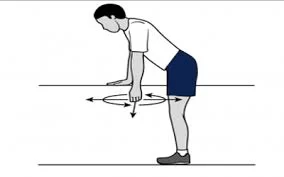
- Maintain a relaxed arm position while bending over. Leaning the arm forward and backward as far as comfortable is the idea.
- Early in the rehabilitation program, these are useful exercises to begin restoring some range of motion to your dislocated shoulder.
- Repeat the exercise, swinging from adduction to adduction from side to side. Lastly, rotate your arm one way, then the other, and try drawing circles with it.
Wall mobility
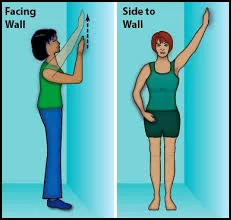
- Maintain a shoulder range of approximately two feet from the wall.
- Gently “walk” your fingers as high up the wall as you can while raising your arm to shoulder height.
- Pause a short while. Once again, move your fingers downward.
- Repeat three times. As you continue, get closer to the wall.
- Increase your time to 30 seconds of holding each stretch.
Dislocated shoulder strengthening exercises
These exercises target strengthening the muscles in the shoulders. In the early phases, you have to prevent abduction at the same time as external rotation, which is rotating your arm up and out sideways. This is because, in this posture, your shoulder is the weakest and most prone to dislocation. The program gets more sophisticated and challenging as it goes along.
Reverse fly
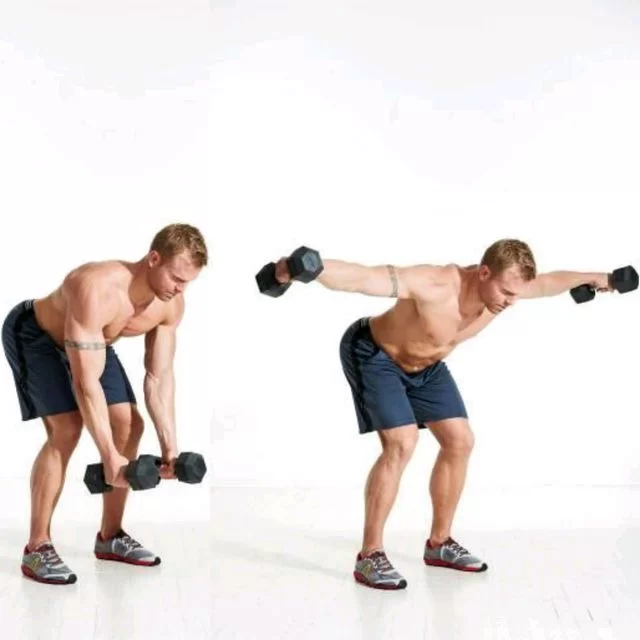
- This exercise supports your shoulders, upper back, and upper arms. It helps enhance posture and is advantageous for people who sit or do forward-bending movements often.
- Stand in the middle of the band.
- The band should cross in front of your lower legs as the ends are crossed to the opposing hands.
- Hinge at your hips as you flex forward slightly, maintaining your spine long and neutral, and keep a slight flex in your knees throughout the movement.
- Once your hands are at least chest height, pull the band up and out to the sides.
- Pull your shoulder blades together.
- Maintain this position for 5 seconds.
- Slowly return to the starting position.
Front raise

- Your anterior (front) shoulders get stronger with this workout. Draw your shoulder blades down, lengthen your spine, and contract your abdominal muscles to help maintain good posture.
- To make the band cross in front of your lower legs, stand in the center of the band and grip each end in the opposing hand.
- Press your hands against your thighs.
- Straighten your arms out in front of you, raising them to shoulder height and pausing. Aim to lift them without swinging or rocking backward.
- After a brief pause, slowly take up your initial position again.
Lateral raise
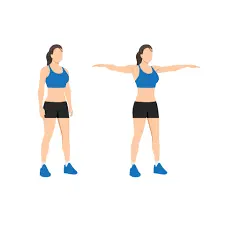
- Your shoulders, upper back, and core muscles are the focus of this workout.
- Put yourself in the center of the band.
- With the band crossing in front of your lower legs and your hands pointing inward, hold either end of the band in the opposing hand.
- Lift your arms to the sides while keeping a small bend in your elbows.
- Keep your arms just above shoulder level and pause for a short while.
- Return to the beginning position gradually.
Internal rotation for a dislocated shoulder
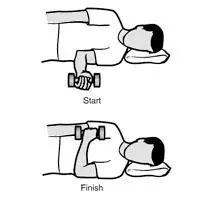
- This is an especially crucial exercise for anyone who has had a shoulder dislocation. Starting with your arm extended, bring it into the center of your abdomen. This exercise can be done in a supine and sitting position.
- At all times, maintain control of the movement. If you find it challenging to move towards the outer range, get closer to where the band is fastened.
External rotation
- Place your arm across your tummy to begin, then turn it to the side.
- Ensure that it is comfortable all the way around. Continue if you are only able to go a portion of the way. It’s best to avoid putting your shoulder into external rotation too soon since it could dislocate.
Proprioception exercises for a dislocated shoulder
Restoring coordination is a key goal of these activities. Your body’s knowledge of your limbs’ movements in space is known as proprioception. Exercises for dislocated shoulder proprioception help your shoulder regain its sense of location about the rest of your body. They are crucial for shoulder rehabilitation since they not only speed up healing but also lower the chance of recurrence.
4 points kneeling over the ball
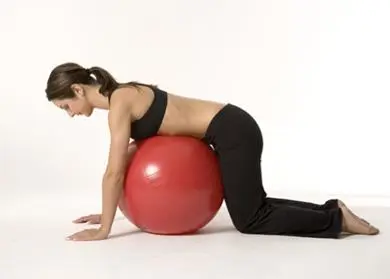
- This dislocated shoulder exercise is designed to educate you about applying lightweight to the shoulder. It fortifies your scapular or shoulder blade muscles.
- Try shoulder taps and alternating hand touches to the person’s shoulder across from you as you move forward. You may even perform little press-ups from here. The higher your hips are above the gym ball, the harder the workout.
Seated Butterfly Table Shoulder Slide Flexion
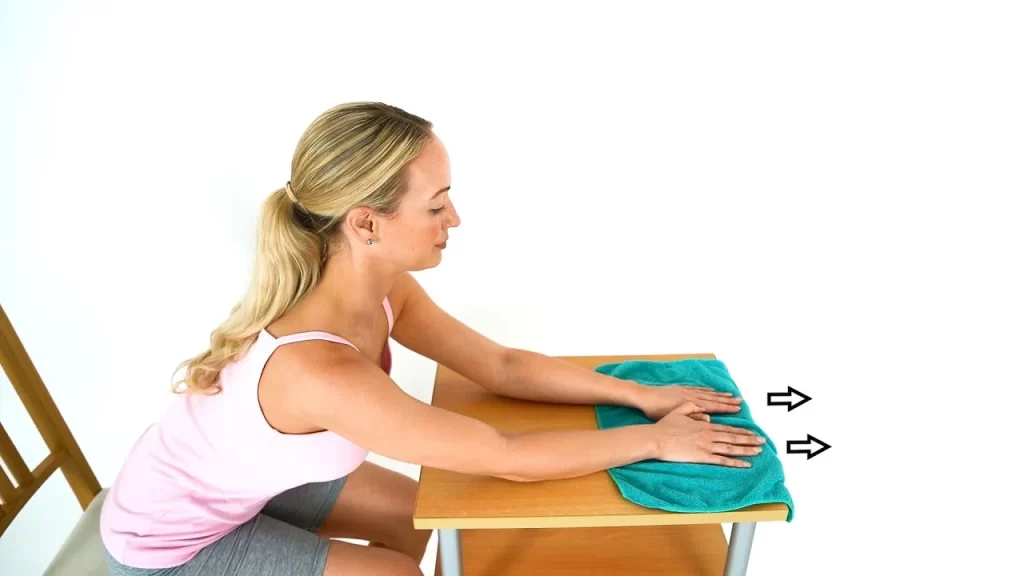
- Place your hands on a table towel, with the involved side on top and your thumbs intersecting. After removing the towel from your body, take a step back and start again. This exercise improves shoulder flexion.
- Try three sets of 12 repetitions.
- When you take a seat near the table, place your forearm on it. Leaning in towards the table, slide your arm away from yourself. Continue to place your arm against the table. Take only as much time as feels comfortable. This exercise is for mobilizing the shoulders.
- Try doing twelve reps in three sets.
Isometric shoulder abduction wall
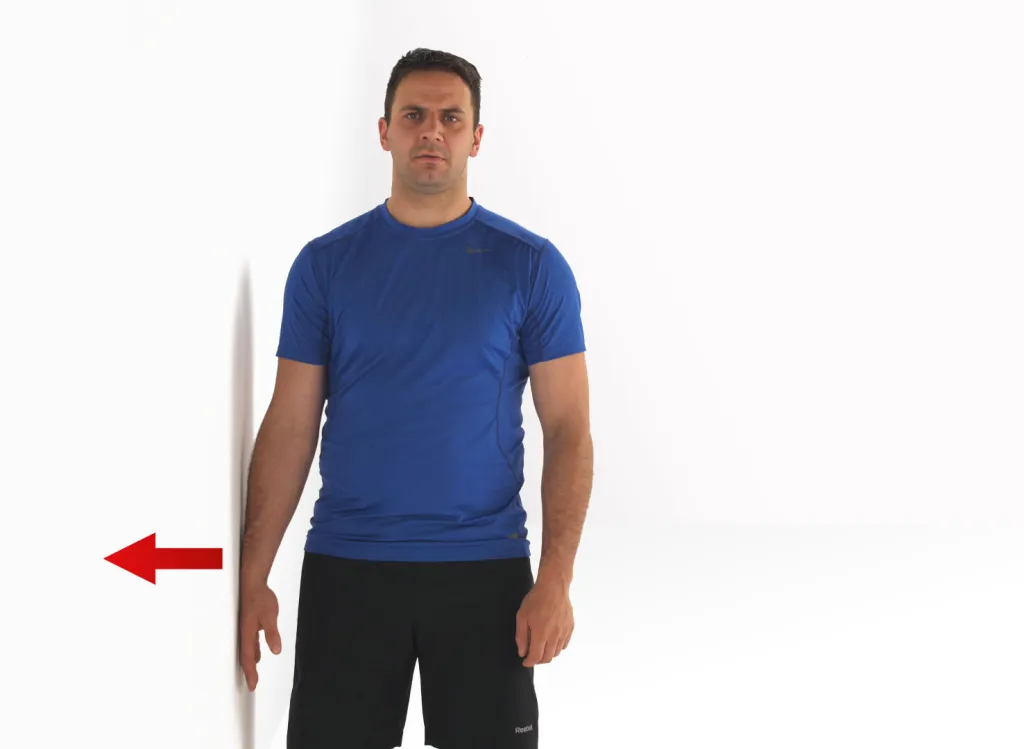
- Place your side up against a wall. Push your arm against the wall, away from your body. The shoulder muscles will contract as a result of this. Relax after holding the contraction. As necessary, repeat.
- Hold for ten seconds, then ten repetitions
Isometric shoulder flexion wall
- Place yourself facing a wall. Choose Whether you want to use your arm straight or bent. It makes no difference which you select. In front of you, press your arm against the wall. The shoulder muscles will contract as a result of this. Relax after holding the contraction. As necessary, repeat.
- Hold for ten seconds, then ten repetitions
shoulder-internal External Rotation with band
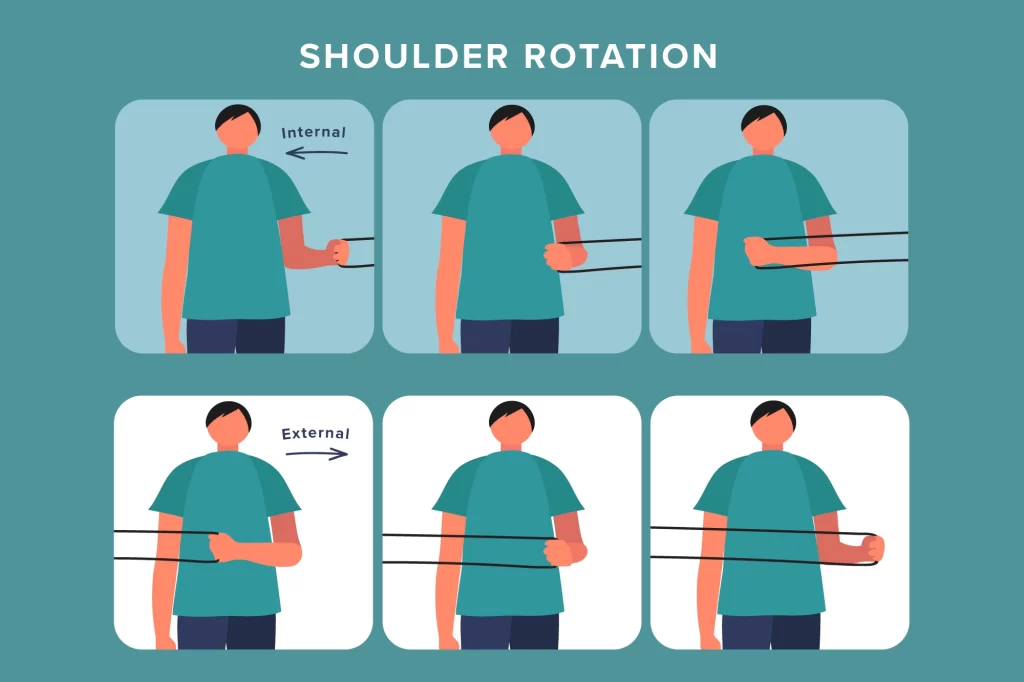
- An exercise band should be attached to a door handle or other solid item in front of you. You should grasp one end of the band in each hand. Put your thumbs down first.
- Take a step back and extend your arms 30 degrees away from your body, with your thumbs facing up.
- As you pull back both ends of the workout band, repeat at 45 degrees and then at 90 degrees. Do 3 sets of 12 repetitions.
Stretching exercises for shoulder dislocation
Crossover arm stretch
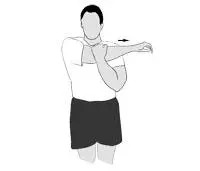
- Raise your right arm across your chest slowly and softly.
- Using your left hand, hold your right arm by the shoulder.
- Stretch continuously for 30 seconds.
- For the following thirty seconds, keep your right shoulder loose.
- Carry out the same steps three more times.
Triceps stretch

- To do this stretch your right hand should be placed on the right shoulder.
- put your left hand over the opposite elbow.
- Gradually lift your right elbow until you feel a pull.
- Stretch for thirty seconds.
- Let go of the stretch and relax for 30 seconds.
- It is advised to do this another one to three times.
Chest stretch

- To do this stretch your palms towards you as you gently clasp your hands behind your back.
- Hold your hands together and gradually raise them until you feel a stretch.
- Maintain this for 30 seconds.
- Loosen your grip force by dropping your hands slightly.
- You can stand straight for up to 30 seconds.
- It is suggested to do this another one to 3 times.
Towel exercises
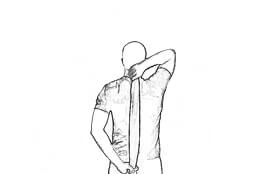
- Take a bath towel with your hands behind your upper back at both ends.
- The towel should be placed vertically and the affected hand should be with the opposite arm.
- Do this for ten seconds and complete ten repetitions of it.
Which exercises you should avoid after shoulder dislocation?
- While movements help strengthen the muscles around the shoulder joint and enhance stability, a few exercises should ideally be avoided. These include:
- Strenuous workout or any exercise that causes pain.
- Activities such as pull-ups, rows, and lifts put your body weight entirely on your shoulder.
- Exercises that need you to reach the back of your body.
- Raising heavy objects.
- Raising your arms above your head, particularly during the initial recovery phase.
Physiotherapy management
Physiotherapy is a very effective preventative measure. Because it is customized to meet each person’s demands, it gives the shoulders more flexibility and helps to maintain the strength and health of the muscles in the shoulder. This also keeps the muscles and bones from degrading.
Working Out After Shoulder Dislocation
It’s essential to gradually increase your daily physical activity and give yourself adequate time for the injury to recover. Even though some of the techniques mentioned above can help you gradually get into a fitness routine, you should start carefully with exercise after 14 weeks, or as directed by your physician. Regaining shoulder flexibility is important, and you can do so by doing mild push-ups and rotational exercises.
Exercises that can be included in the healing plan include push-ups, flexions, abductions, and the Pendulum hand, which involves hanging the damaged hand bent over a table or counter.
FAQs
Which is the quickest way to recover a dislocated shoulder?
Physiotherapy treatment including shoulder flexion, shoulder abduction, and shoulder flexion can effectively heal a dislocated shoulder. Moreover, it is very advised to adhere to the RICE technique (rest, ice, compress, elevate).
After being dislocated, would my shoulder ever be the same?
A dislocated shoulder may heal fully with the right kind of regular medical care. On the other hand, having this condition increases the possibility of further dislocations.
What is the expected duration of recovery for a dislocated shoulder?
A dislocated shoulder takes approx 12 to 16 weeks to heal fully. But in two weeks, if you limit yourself to strenuous activity, you will be able to resume your usual activities.
Which exercise is best for treating a dislocated shoulder?
To manage a dislocated shoulder, our team suggests different exercises according to the severity. However, shoulder flexion, shoulder abduction, and shoulder extension are the primary workouts that have aided in a quick recovery.
Which things increase the risk of shoulder dislocation?
Risk Elements for Shoulder Dislocation
Baseball, volleyball, swimming, and other sports requiring a lot of overhead motion put players at risk for a microtraumatic dislocation. The shoulder is far more susceptible to another dislocation after the first one has occurred, particularly in younger individuals.
Which exercises should be avoided after shoulder dislocation?
Workouts that are difficult or painful.
Exercises that place all of your body weight on your shoulder include pull-ups, rows, and raises.
Things that require you to put your arms behind your back.
pulling big objects up.
References
- Physio, S. (n.d.). Best 5 Exercises after a Shoulder Dislocation (Mobility Phase) – Surrey Physio. Surrey Physio. https://www.surreyphysio.co.uk/top-5/best-5-exercises-after-a-shoulder-dislocation-mobility-phase/
- Walden, M. (2023, May 15). Dislocated shoulder exercises. Sportsinjuryclinic.net. https://www.sportsinjuryclinic.net/acute-shoulder-injuries/dislocated-shoulder-strengthening-exercises
- Clinic, O. (2023, December 6). Best rehab exercises for dislocated shoulders. The Orthopedic Clinic. https://orthotoc.com/dislocated-shoulder-rehab-exercises/
- The best 7 shoulder Dislocation Exercises – Dr. Pamela Mehta. (2023, October 27). Resilience Orthopedics. https://www.resilienceorthopedics.com/shoulder/dislocation-exercises/

